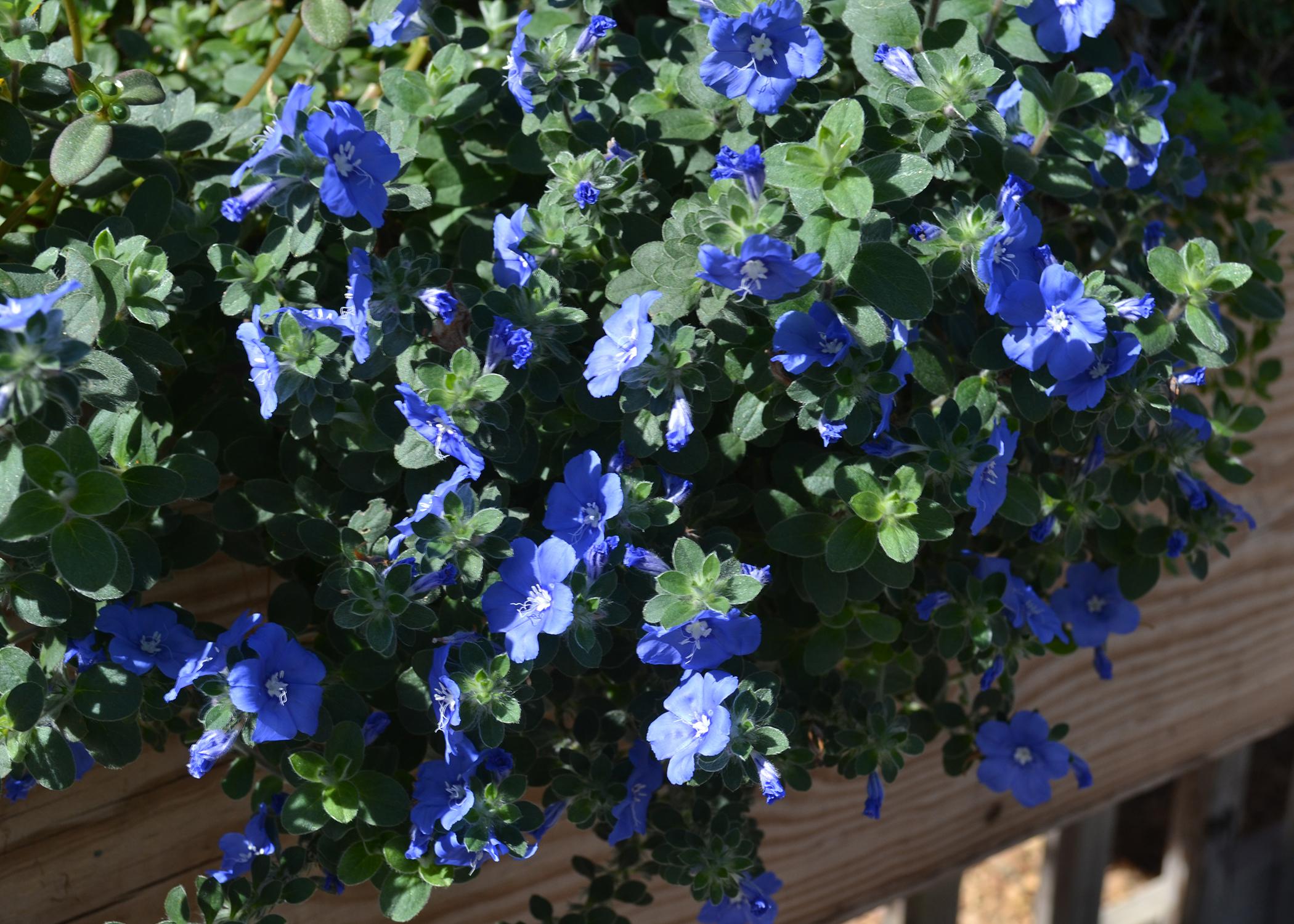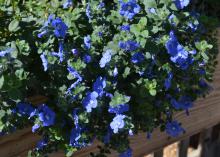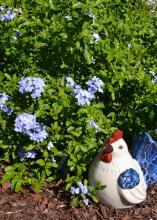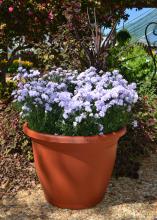True blue flowers bring beauty, calm to gardens
Blue-blooming plants bring a serene beauty to my garden, and two of my favorites -- Blue My Mind and Blue Plumbago -- each offer unique qualities.
Blue My Mind, known scientifically as Evolvulus glomeratus, is a stunning, low-growing perennial with true-blue, funnel-shaped flowers that pop against silvery-green, slightly fuzzy foliage. It forms a dense, mounded habit about 6 to 12 inches tall and spreads up to 24 inches wide.
This plant thrives in full sun and is remarkably heat- and drought-tolerant. It performs best in sandy or rocky soil, and regular deadheading helps maintain its tidy appearance.
This hardy ground cover works beautifully in rock gardens or spilling over container edges, and its deer resistance makes it an excellent choice for landscapes in warmer U.S. Department of Agriculture cold hardiness zones. In cooler climates, the plant can be treated as an annual, providing long-lasting blooms until the first frost.
Blue Plumbago, known scientifically as Plumbago auriculata, offers delicate clusters of sky-blue flowers from late spring to frost. It has a graceful, sprawling growth habit that reaches 3 to 10 feet tall and wide.
This fast-growing plant is ideal for warmer climates and thrives in zones 8 to 11, where it can be grown as a perennial. For cooler zones, treat it as an annual or bring it indoors for the winter.
Plant Blue Plumbago in full sun with at least six hours of direct light to encourage more blooms. Feed it monthly with a balanced fertilizer during its growing season to keep it vigorous. The plant prefers slightly acidic to neutral soil. Water it regularly and prune it in early spring to maintain its lush shape.
The cascading growth of Blue Plumbago makes it perfect for adorning fences, trellises or walls, and its pollinator appeal is a bonus for butterfly gardens.
I recently came across Peter III Blue Aster, a compact, hardy perennial that has daisy-like blue flowers with yellow centers. This plant blooms in late summer to fall and reaches 18 to 24 inches tall and 12 to 18 inches wide.
This aster is well-suited to zones 4 through 8 and thrives in full sun or partial shade. Its cool-weather tolerance and compact size make it ideal for borders and pollinator gardens, where it attracts bees and butterflies.
Peter III grows best in moist, well-drained soil, and adding mulch helps retain moisture and keeps roots cool in the summer. Deadhead spent blooms to prolong flowering, and trim in early summer to encourage bushier growth.
Asters are prone to powdery mildew, so plant them with good air circulation and avoid overhead watering to help maintain their health.
Each of these blue plants pair beautifully with contrasting, warm-toned flowers like yellows and golds, creating a striking display.
The psychological benefits of blue are also significant, as the color is often associated with calmness and relaxation. Blue flowers can help create a serene, meditative garden atmosphere, providing a peaceful escape from daily stresses.
Additionally, blue-flowering plants can offer long-lasting color across multiple seasons. Blue My Mind and Blue Plumbago bloom through the summer and fall, while blue asters bloom in the fall, extending seasonal interest and beauty well into autumn.
Whether chosen for their visual impact, tranquil effect or ecological benefits, blue flowers are a valuable addition to the landscape.






